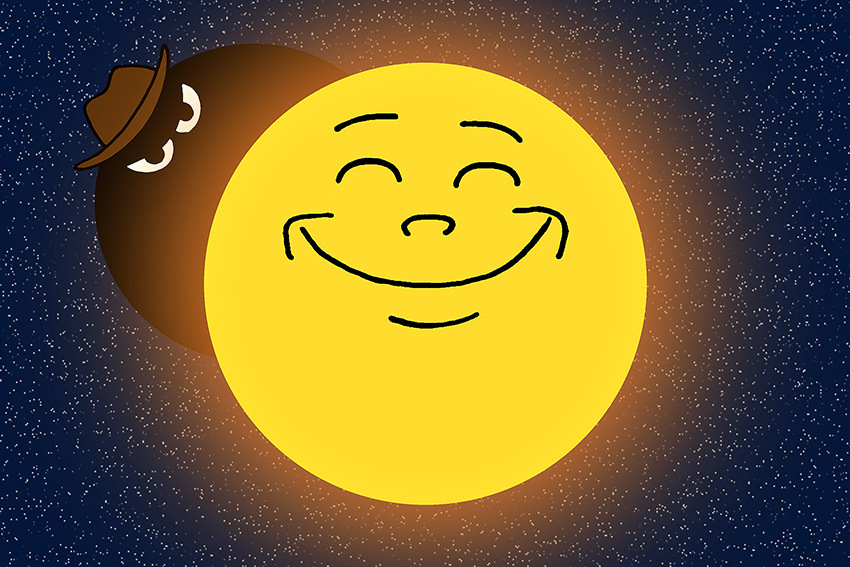Ah, space. Beyond the confines of our little blue planet, it looms as a mysterious entity in people’s imaginations. Stories circulate about what might be out there: things that hide on the dark side of the moon, beyond the confines of our star system, or in galaxies far, far away.
A hypothetical Counter-Earth is hidden from view behind the sun. It has made many appearances in science fiction — an Earth-like planet, sharing Earth’s orbit, but cloaked from human notice by its star.
But scientists have eyes up in space. Even if it were not observable from Earth, scientists would easily detect Counter-Earth, according to Adam L. Kraus, an assistant professor in UT’s astronomy department.
“We’ve sent stuff around the solar system and it’s been viewing the sun from different angles,” Kraus said. “In particular, there are missions that are observing the sun all of the time.”
If NASA and other organizations were part of a conspiracy to hide the existence of Counter-Earth, satellite surveillance would be suspect. But based on scientists’ observations of the solar system, there is other evidence against the Counter-Earth.
Counter-Earth would have a gravitational effect on anything around it. Judit G. Ries, research associate and lecturer in UT’s astronomy department, said researchers would detect its influence on Earth, other planets and especially satellites — they would notice if something on the other side were tugging at planets such as Mercury and Venus.
“[Counter-Earth] would probably perturb the motion of the satellites and inner planets,” Ries said. “You would be able to detect it; you don’t even have to see it.”
Scientists would notice Counter-Earth even if the sun blocked our direct view of it. But skeptics would perhaps be better satisfied if we moved on from the question “Is Counter-Earth observable?” to “Could Counter-Earth exist?”
There are a few points in a planet’s orbit — known as Lagrangian points — where other celestial bodies can rest in a somewhat stable position relative to the planet and the sun, according to Kraus.
“These are useful places to put satellites,” said Kraus. “The Earth has one or two objects that might be floating around out in these places.”
Funnily enough, one of Earth’s Lagrangian points, dubbed L3, is located on the opposite side of the sun, where a hypothetical Counter-Earth could exist. But L3 is an unstable Lagrangian point. Bodies that settle there eventually want to drift away because of the perturbing effects of other bodies, according to Ries.
“You can show that it’s theoretically unstable,” Ries said. “No large body can exist there. Nothing Earth-sized, maybe not even half-Earth.”
When objects are located in unstable Lagrangian points, they need stabilizers to remain in positions when they start to drift away. The successor to the Hubble Space Telescope will be placed at L2, one of the unstable points.
“One of the things that [factored] in its total lifetime is how long can it sit out there before its thrusters run out of reaction mass,” Kraus said. “And then it’s just gonna drift.”
This means that realistically, Counter-Earth would have to be a small object, and someone would need to actively keep it in orbit.
“Something can sit out there for a while, but you would have to try pretty hard to hide it,” Kraus said.















